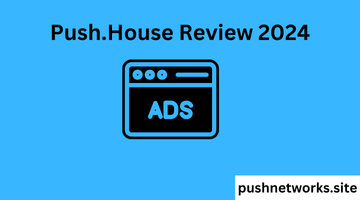what is Push.House
Push.House appears to be a digital platform or service, likely related to marketing or technology. Without more specific information, I can provide a general interpretation based on the name and common industry practices:
- Push Notifications: The name suggests it might be a service focused on push notifications, which are messages sent directly to users’ devices from websites or apps.
- Marketing Tool: It could be a platform that helps businesses or developers send targeted push notifications to their audience.
- Mobile Engagement: The service might specialize in mobile user engagement strategies.
- Analytics: It may offer analytics and tracking for push notification campaigns.
- Multi-Platform Support: The platform might support push notifications across various devices and operating systems.
- Automation: It could provide tools for automating push notification campaigns.
- Personalization: The service might offer features for personalizing messages based on user behavior or preferences.
- Integration: It may integrate with other marketing or analytics tools.
Here are some potential pros and cons of Push.House, assuming it’s a push notification service for marketing and user engagement:
Pros:
- Direct communication: Allows businesses to reach users directly on their devices.
- High visibility: Push notifications are hard to miss, increasing the likelihood of user engagement.
- Real-time messaging: Enables instant communication for time-sensitive information or offers.
- Increased engagement: Can help boost app or website revisits and user interaction.
- Personalization: Likely offers tools to tailor messages based on user behavior or preferences.
- Analytics: Probably provides data on notification performance, helping to refine strategies.
- Automation: May offer features to automate campaigns, saving time and resources.
- Cross-platform support: Likely works across various devices and operating systems.
Cons:
- Potential for overuse: Excessive notifications can annoy users and lead to opt-outs.
- Privacy concerns: Some users may be uncomfortable with the data collection required for personalized messaging.
- Technical challenges: Ensuring notifications display correctly across all devices can be complex.
- User fatigue: As push notifications become more common, their effectiveness may decrease over time.
- Dependency: Relying heavily on push notifications might neglect other marketing channels.
- Learning curve: Effectively using the platform may require time and training.
- Cost: Depending on the pricing model, it could be expensive for small businesses or high-volume users.
- Deliverability issues: Network problems or user settings can prevent notifications from being received.
To set up an account with Push.House, you would likely follow these steps:
- Visit the website: Go to the official Push.House website.
- Find the sign-up option: Look for a “Sign Up,” “Get Started,” or “Create Account” button, typically located in the top right corner or center of the homepage.
- Choose an account type: There may be different tiers or plans available. Select the one that best suits your needs.
- Provide company information: Fill out the registration form with details such as:
- Company name
- Website URL
- Industry
- Enter personal details:
- Your name
- Work email address
- Job title
- Create a strong password
- Verify your email: Check your inbox for a verification email and click the link to confirm your account.
- Complete your profile:
- Add any additional required information
- Set up your company profile
- Integration setup:
- Follow instructions to integrate Push.House with your website or app
- This may involve adding a code snippet to your site or following API documentation
- Configure settings:
- Set up your notification preferences
- Define audience segments if applicable
- Payment information: If it’s a paid service, enter your payment details.
- Discover the features and tools available on the dashboard.
- Create your first campaign: Start setting up your initial push notification campaign.
Remember, these steps are a general guide. The exact process may vary depending on Push.House’s specific setup. If you encounter any issues or have questions during the signup process, look for a “Help,” “Support,” or “FAQ” section on the website, or contact their customer support.
conclusion
Push.House represents a powerful tool in the modern digital marketing landscape, offering businesses a direct line of communication to their audience through push notifications. By providing a platform that likely combines ease of use with sophisticated targeting and analytics capabilities, Push.House empowers marketers to create timely, personalized, and impactful messaging campaigns. While the effectiveness of push notifications can be significant, users of Push.House must balance the potential for increased engagement with the risk of notification fatigue. Ultimately, the value of Push.House lies in its ability to help businesses cut through the digital noise, delivering relevant content to users at the right time and on the right device. As with any marketing tool, success with Push.House will depend on strategic implementation, continuous optimization based on performance data, and a deep understanding of the target audience’s preferences and behaviors. For businesses looking to enhance their digital presence and user engagement, Push.House offers a compelling solution in the ever-evolving world of online communication.
